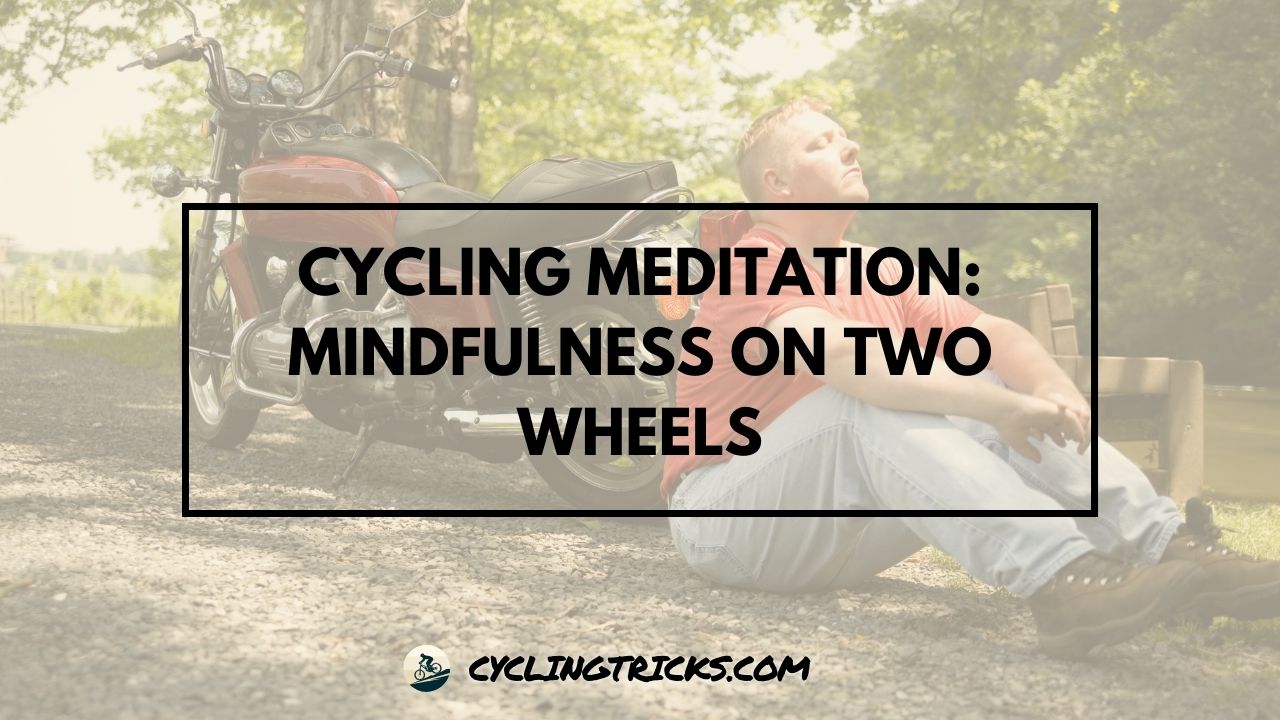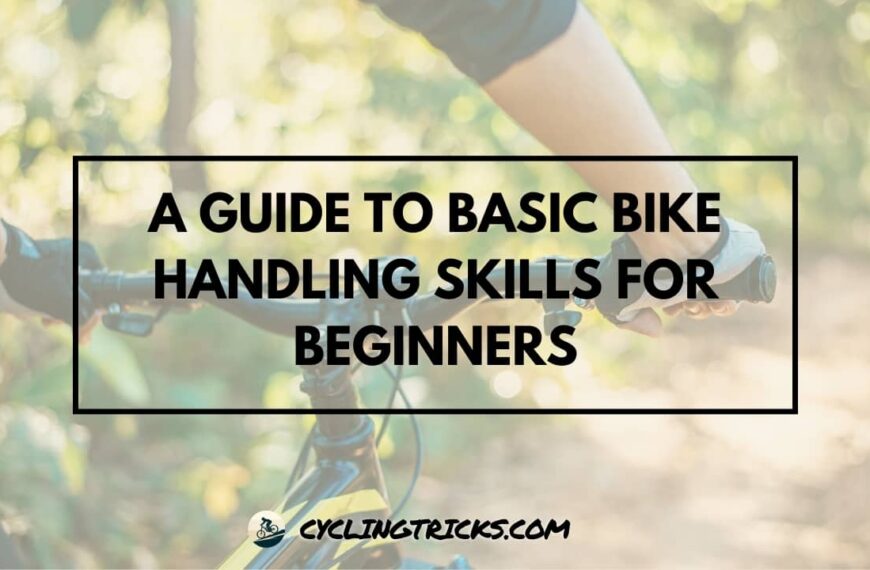Did you know that mastering the art of slow-speed balance on a bicycle can vastly improve your overall riding skills?
Whether you’re a seasoned cyclist or just starting out, having the ability to maintain balance at slower speeds is crucial for maneuvering through tight turns, navigating obstacles, and staying in control in various challenging situations.
In this article, I will share essential techniques and tips to help you improve your slow-speed balance on a bike.
From understanding the basics of body positioning and weight distribution to mastering specific balance exercises, you’ll gain the skills necessary to enhance your bike control and confidence while riding at slower speeds.
Key Takeaways:
- Slow-speed balance on a bicycle is a critical skill that can improve overall riding abilities.
- Body positioning, weight distribution, and core muscle engagement play a vital role in maintaining stability at slower speeds.
- Practicing specific balance exercises and drills can help develop and refine your slow-speed bike control.
- Balance training is an effective way to enhance your overall balance and control on a bike.
- Learning to maintain balance in challenging situations, such as tight turns and uneven terrain, is essential for safe and confident slow-speed riding.
Understanding the Basics of Slow-Speed Balance
When it comes to slow-speed bike riding, mastering the art of balance is crucial. Riding at a slow pace requires a different set of skills and techniques compared to riding at higher speeds.
In this section, I will delve into the fundamental principles of slow-speed balance, providing you with essential tips and insights to enhance your slow-speed biking skills.
Body Positioning: Maintaining the correct body position is vital for maintaining stability and control while riding at a slow speed. Keep your body relaxed and centered over the bike, with your knees slightly bent. Distribute your weight evenly between the handlebars and the saddle, focusing on maintaining a stable core.
“Slow-speed balance is all about finding that sweet spot where you feel in control and connected to your bike.”
Weight Distribution: Understanding how to distribute your weight effectively is key to maintaining balance at a slow pace. When riding slowly, shift your weight towards the rear of the bike to keep your front wheel light and responsive. This allows for smoother steering and maneuvering in tight spaces.
Core Muscles: Your core muscles play a crucial role in maintaining stability and balance while riding. Engage your core by consciously tightening your abdominal muscles. This will create a strong and stable foundation, helping you stay upright and in control, even at slow speeds.
By mastering these basic principles of slow-speed balance, you’ll be equipped with the skills and knowledge needed to navigate challenging scenarios with ease.
In the next section, we will explore specific techniques and exercises that can further enhance your slow-speed bike riding abilities.
Mastering Slow-Speed Balance Techniques
Now that we understand the basics of slow-speed balance, it’s time to dive into specific exercises and drills that can help you develop and refine your skills.
These bicycle balance exercises will enhance your bike control and maneuvering abilities in various slow-speed scenarios. Follow the step-by-step instructions and practical tips below to become a master of slow-speed balance.
1. Cone Slalom
This exercise will improve your bike control and agility while riding at slow speeds. Set up a series of cones in a slalom pattern, and navigate through them without knocking any over. Focus on maintaining a smooth and steady pace while using subtle handlebar movements to weave through the cones.
2. Figure-Eight Riding
Riding figure-eight patterns is an excellent exercise to enhance slow-speed maneuvering skills. Find an open space and create two circles intersecting at the middle, resembling a figure-eight.
Practice riding through the figure-eight pattern while maintaining balance and control. Concentrate on maintaining consistent speed and body position throughout the exercise.
3. Trackstand Practice
Trackstand is a technique that allows you to balance your bike at a standstill without moving your feet. This exercise improves your overall balance and control.
Find a flat area and practice bringing your bike to a stop, then attempt to maintain balance without putting your feet down. Use subtle movements of your handlebars and shift your weight to maintain balance.
Remember to keep practicing these exercises regularly to build muscle memory and improve your slow-speed bike maneuvering skills. With time and dedication, you’ll become more confident and adept at maintaining balance and control in various slow-speed situations.
| Exercise | Description |
|---|---|
| Cone Slalom | Avoid knocking over cones while weaving through them in a slalom pattern |
| Figure-Eight Riding | Ride through a figure-eight pattern, maintaining balance and control |
| Trackstand Practice | Balance your bike at a standstill without moving your feet |
Building Bike Control Through Balance Training
Balance training is an integral part of mastering slow-speed balance on a bicycle. By engaging in targeted exercises and techniques, you can improve your overall control and stability while riding at lower speeds.
These training methods focus on developing specific aspects of balance, ensuring that you can confidently navigate various terrains and situations.
“Balance is not something you find. It’s something you create.” – Unknown
One effective balance training technique is the “one-legged drill.” This exercise involves riding your bike while lifting one foot off the pedal and keeping it elevated for a short period of time. This challenges your balance and forces you to rely on your core muscles to maintain stability.
Tip: Start by attempting this drill in a controlled environment, such as an empty parking lot or a quiet street, before venturing into more challenging scenarios.
Another beneficial exercise is the “scoop and pedal” drill. This technique focuses on weight distribution and smooth pedal strokes. Begin by scooping your foot upwards as you approach the top of the pedal stroke and then push downwards to complete the rotation. This motion encourages a fluid transfer of weight and enhances your balance during slow-speed riding.
Tip: Practice the scoop and pedal drill on flat surfaces initially before attempting it on inclines or declines.
Additionally, incorporating yoga or Pilates into your training routine can also improve your bike control and stability. These exercises help strengthen your core muscles and improve your overall body awareness, both of which are crucial for maintaining balance while riding at slower speeds.
| Balance Training Techniques | Description |
|---|---|
| One-legged drill | Riding your bike with one foot lifted off the pedal to challenge balance and engage core muscles. |
| Scoop and pedal drill | Focuses on weight distribution and smooth pedal strokes for fluid weight transfer and enhanced balance. |
| Yoga and Pilates | Incorporating these exercises to strengthen core muscles and improve body awareness. |
Remember, balance training is a continuous process that requires practice and dedication.
By incorporating these techniques into your training regimen, you can significantly improve your slow-speed balance on a bicycle and ride with confidence in any situation.
Enhancing Slow-Speed Balance in Challenging Situations
When it comes to mastering slow-speed balance on a bicycle, it’s crucial to be prepared for challenging situations. Navigating tight turns, maneuvering through obstacles, and riding on uneven terrain can put your balance skills to the test.
To help you stay in control and maintain stability, here are some valuable tips and techniques:
- Look ahead: Keep your eyes focused on where you want to go rather than directly in front of your bicycle. This helps you anticipate turns and obstacles, allowing you to make smoother, more calculated movements.
- Weight distribution: Shift your body weight towards the inside of turns to maintain balance. This technique, known as counterbalancing, prevents your bicycle from leaning too much and helps you navigate tight corners with ease.
- Slow down: Reduce your speed before entering challenging sections. Slowing down gives you more time to react, adapt, and make necessary adjustments to your balance and control.
- Use your brakes: Proper brake control is essential for slow-speed balance. Apply both front and rear brakes evenly to maintain stability. Avoid harsh braking, which can cause your bicycle to skid and compromise your balance.
- Practice balance exercises: Regularly engage in specific balance exercises to strengthen your core muscles and improve your overall bike control. Incorporate drills that simulate challenging slow-speed situations, such as weaving through cones or riding over small obstacles.
“Slow-speed balance requires focus, control, and proper technique. With practice and these tips, you can confidently navigate challenging situations and enhance your slow-speed bicycle control.”
Avoiding some common mistakes is just as important as learning the right techniques. Be sure to:
- Avoid making sudden steering adjustments that can throw off your balance.
- Don’t grip the handlebars too tightly; instead, maintain a relaxed grip to allow for smooth and precise movements.
- Resist the urge to look down at your bicycle while navigating challenging sections. Keep your eyes forward and maintain situational awareness.
Finally, always remember that mastering slow-speed balance takes time, patience, and practice. The more you ride and challenge yourself in different situations, the better you’ll become at maintaining control and stability on your bicycle.
Conclusion
Throughout this article, we have explored the art of slow-speed balance on a bicycle and the techniques to improve your skills in this area. By understanding the basics of slow-speed balance, mastering specific techniques, and engaging in balance training, you can enhance your control and stability while riding at slower speeds.
It is essential to remember that achieving proficiency in slow-speed balance requires continuous practice and perseverance. By consistently applying the tips and exercises discussed in this article, you can develop the necessary muscle memory and riding instincts to navigate challenging slow-speed situations confidently.
So, whether you are navigating tight turns, maneuvering through obstacles, or riding on uneven terrain, always keep practicing and pushing yourself to improve. With time and dedication, you will become a master of slow-speed balance on a bicycle and enjoy the benefits of enhanced control and maneuverability.
Remember, balance is not only about physical control but also mental focus and confidence. Stay positive, trust in your abilities, and believe in the progress you can achieve. Keep pushing your limits, and soon enough, you’ll be gliding through slow-speed challenges with ease. Happy riding!









